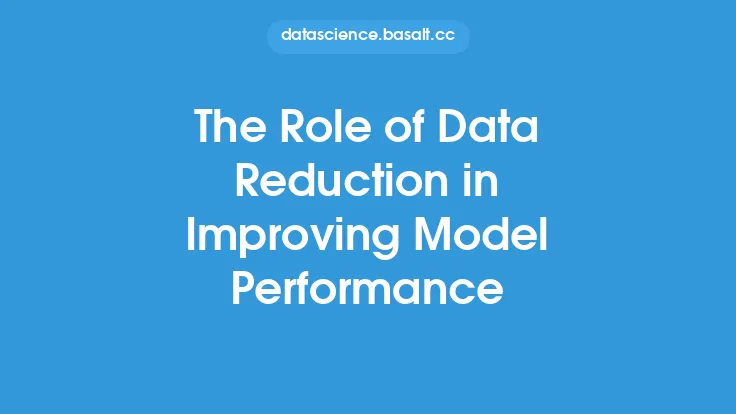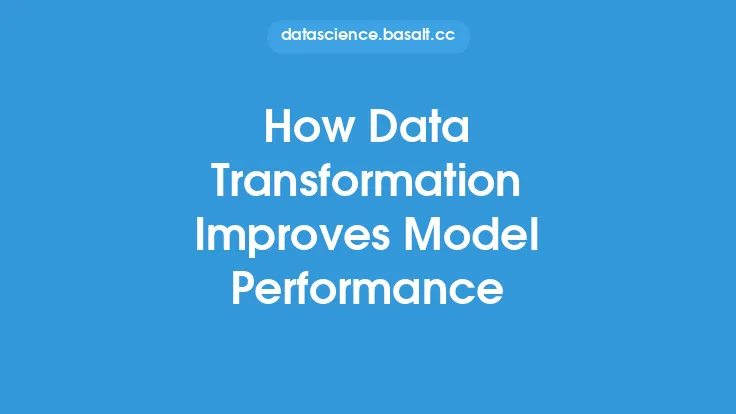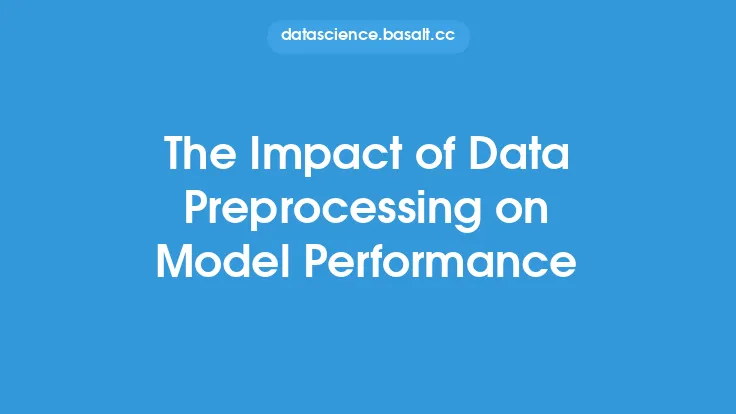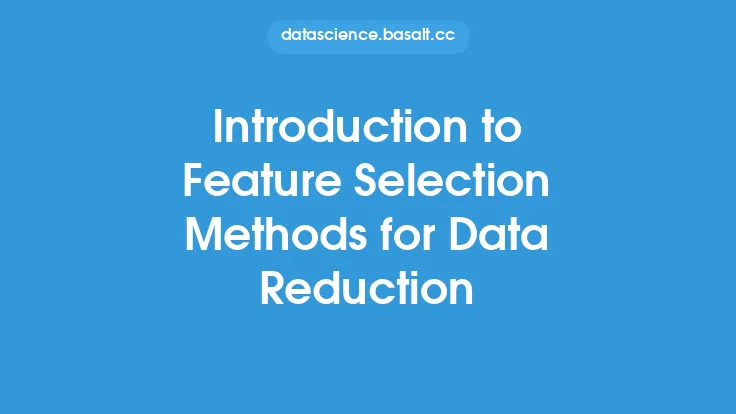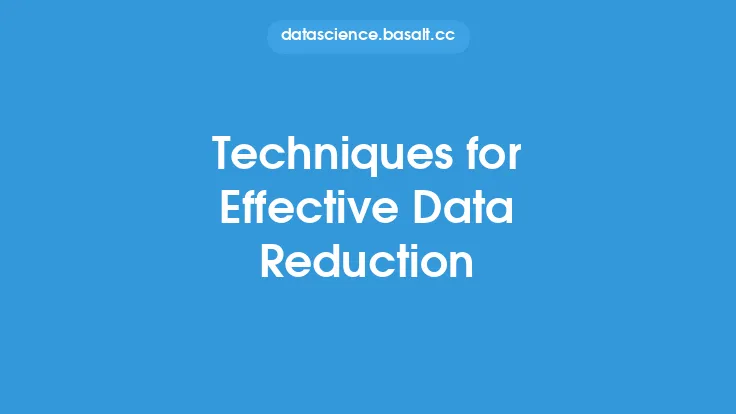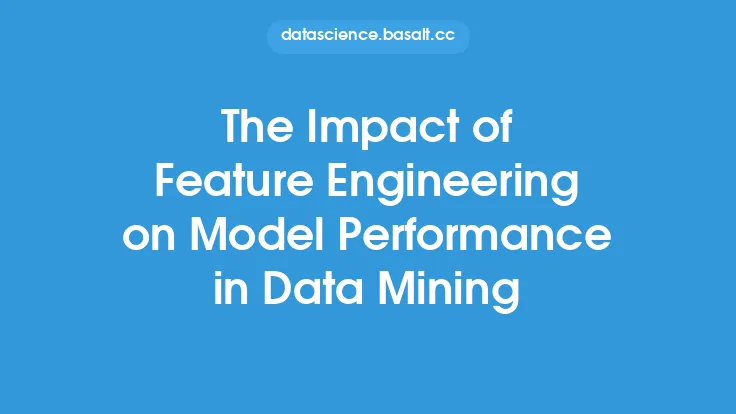Data reduction is a crucial step in the data analysis process, as it enables the removal of irrelevant or redundant data, thereby improving the performance of machine learning models. With the increasing amount of data being generated, it is essential to reduce the dimensionality of the data to prevent overfitting, improve model interpretability, and reduce computational costs. In this article, we will delve into the various data reduction methods that can be employed to improve model performance.
Introduction to Data Reduction Methods
Data reduction methods can be broadly categorized into two types: feature selection and dimensionality reduction. Feature selection involves selecting a subset of the most relevant features from the original dataset, while dimensionality reduction involves transforming the original features into a lower-dimensional space. Both methods aim to reduce the number of features or dimensions in the dataset, thereby improving model performance. Some common data reduction methods include principal component analysis (PCA), singular value decomposition (SVD), and feature selection using correlation analysis or mutual information.
Principal Component Analysis (PCA)
PCA is a widely used dimensionality reduction technique that transforms the original features into a new set of orthogonal features, called principal components. The principal components are ordered by their variance, with the first principal component explaining the most variance in the data. By retaining only the top k principal components, the dimensionality of the data can be reduced, and the noise in the data can be filtered out. PCA is particularly useful for datasets with a large number of features, as it can help to identify the most informative features and reduce the risk of overfitting.
Singular Value Decomposition (SVD)
SVD is another popular dimensionality reduction technique that decomposes a matrix into three matrices: U, Σ, and V. The U matrix represents the left-singular vectors, the Σ matrix represents the singular values, and the V matrix represents the right-singular vectors. By retaining only the top k singular values and the corresponding singular vectors, the dimensionality of the data can be reduced. SVD is particularly useful for datasets with a large number of features and a small number of samples, as it can help to identify the most informative features and reduce the risk of overfitting.
Feature Selection Using Correlation Analysis
Feature selection using correlation analysis involves selecting a subset of features that are highly correlated with the target variable. The correlation coefficient is used to measure the strength and direction of the linear relationship between two variables. Features with a high correlation coefficient are selected, while features with a low correlation coefficient are discarded. This method is particularly useful for datasets with a large number of features, as it can help to identify the most informative features and reduce the risk of overfitting.
Feature Selection Using Mutual Information
Feature selection using mutual information involves selecting a subset of features that have a high mutual information with the target variable. Mutual information measures the amount of information that one variable contains about another variable. Features with high mutual information are selected, while features with low mutual information are discarded. This method is particularly useful for datasets with a large number of features, as it can help to identify the most informative features and reduce the risk of overfitting.
Comparison of Data Reduction Methods
The choice of data reduction method depends on the specific problem and dataset. PCA is particularly useful for datasets with a large number of features, while SVD is particularly useful for datasets with a large number of features and a small number of samples. Feature selection using correlation analysis and mutual information is particularly useful for datasets with a large number of features and a clear understanding of the relationships between the features and the target variable. A comparison of the different data reduction methods is shown in the table below.
| Method | Description | Advantages | Disadvantages |
|---|---|---|---|
| --- | --- | --- | --- |
| PCA | Transforms original features into a new set of orthogonal features | Reduces dimensionality, filters out noise | Can be sensitive to outliers, assumes linear relationships |
| SVD | Decomposes a matrix into three matrices | Reduces dimensionality, identifies most informative features | Can be computationally expensive, assumes linear relationships |
| Correlation Analysis | Selects features that are highly correlated with the target variable | Identifies most informative features, reduces dimensionality | Assumes linear relationships, can be sensitive to outliers |
| Mutual Information | Selects features that have a high mutual information with the target variable | Identifies most informative features, reduces dimensionality | Can be computationally expensive, assumes non-linear relationships |
Conclusion
Data reduction is a crucial step in the data analysis process, as it enables the removal of irrelevant or redundant data, thereby improving the performance of machine learning models. The choice of data reduction method depends on the specific problem and dataset. PCA, SVD, feature selection using correlation analysis, and feature selection using mutual information are all useful data reduction methods that can be employed to improve model performance. By understanding the strengths and limitations of each method, data analysts can select the most appropriate method for their specific problem and dataset, and improve the performance of their machine learning models.
